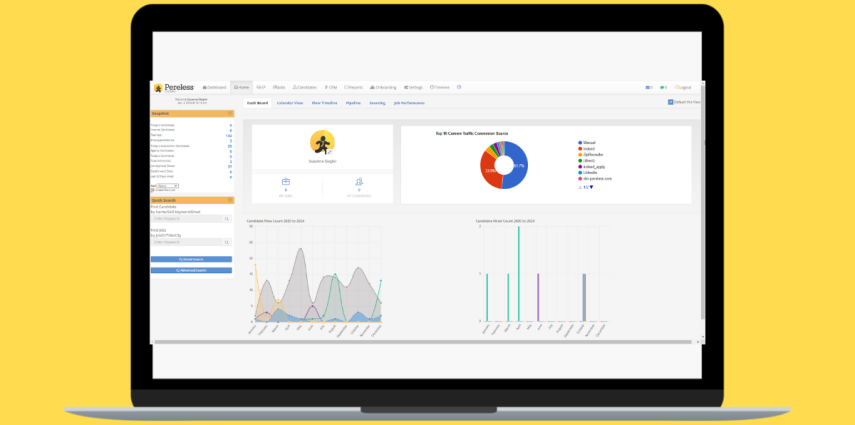In today’s fast-paced hiring landscape, businesses are turning to technology to streamline and enhance their recruitment processes. Text recruiting software platforms have gained significant traction, offering employers an efficient, instant, and convenient way to engage with candidates. But before you take the leap into adopting a text recruiting platform, it’s essential to understand the key features, benefits, and potential drawbacks of these tools. Here are five crucial things you need to know before purchasing a text recruiting software platform.
1. Understanding Your Recruitment Needs
Before diving into the world of text recruiting, take a step back and assess your recruitment process. Are you hiring for high-volume roles? Are you looking to speed up candidate engagement? Do you need to streamline communication with passive candidates? Identifying your specific needs will help you choose the platform that aligns best with your goals.
Some text recruiting platforms are designed for large-scale hiring and may include features like automated texting, bulk messaging, and scheduled outreach. Others may cater more to personalized engagement, allowing one-on-one communication with a smaller pool of candidates. Knowing what you want from the software will allow you to make a more informed decision.
2. Integration Capabilities with Your Existing Systems
Recruiting software is most effective when it works in harmony with your existing tools. Whether you’re using an Applicant Tracking System (ATS), a Customer Relationship Management (CRM) system, or any other HR tech tools, seamless integration is crucial for maintaining a smooth and efficient workflow.
When evaluating text recruiting platforms, inquire about how well they integrate with the systems you’re currently using. Some platforms offer out-of-the-box integrations with popular ATS and CRM systems, while others may require additional customization. Ensure that the platform you choose supports data syncing, candidate tracking, and team collaboration to avoid manual data entry or potential errors.
3. Compliance and Security
Text recruiting platforms handle sensitive candidate information, and it’s essential to ensure that the platform complies with regulations like the Telephone Consumer Protection Act (TCPA), General Data Protection Regulation (GDPR), and other industry-specific compliance standards. Look for platforms that offer secure communication channels, such as encrypted messaging, to protect candidate data.
Additionally, make sure the platform complies with opt-in and opt-out requirements. Many platforms include features to help candidates easily unsubscribe or opt out of text messages, which is a crucial aspect of maintaining compliance and protecting your company’s reputation.
4. User Experience and Customization
A platform’s user experience is key to maximizing its effectiveness. Ideally, the platform should be intuitive, easy to navigate, and offer enough customization options to suit your organization’s unique needs. Consider the following factors when evaluating user experience:
- Ease of Use: The platform should be easy for both recruiters and candidates to use. Look for user-friendly dashboards, clear workflows, and mobile-optimized interfaces.
- Personalization Options: A good text recruiting platform should allow you to tailor messages to specific candidates, roles, or campaigns. Customizable templates and dynamic fields for candidate information can help personalize communication at scale.
- Multi-channel Communication: Some platforms allow you to integrate SMS with other communication channels like email and chat. This flexibility enables you to communicate with candidates through their preferred medium.
5. Support and Training
No software platform is perfect, and you’re likely to encounter challenges during your adoption and use of a text recruiting platform. That’s why having access to strong customer support and training resources is essential.
Ensure that the provider offers comprehensive onboarding, training materials, and ongoing support. Look for platforms with a responsive customer support team via chat, email, or phone, and verify whether they offer a knowledge base or live webinars for troubleshooting.
Additionally, check whether the platform offers reporting and analytics tools to help you evaluate the effectiveness of your recruiting efforts. Data-driven insights can help you optimize your text recruiting strategy over time and improve the candidate experience.
*Recently, Pereless Systems launched their AI mascot named Bradford! Bradford has over 25 years of talent management experience. After every blog, Bradford will provide his expertise in the intricate world of talent management software like never before.*
What Would Bradford Do?

Text recruiting is a powerful tool that can revolutionize your hiring process by improving communication and engagement with candidates. However, before committing to a text recruiting software platform, it’s vital to evaluate your specific needs, ensure seamless integration, understand compliance requirements, and prioritize a good user experience. By taking these factors into consideration, you can make an informed decision and implement a solution that enhances your recruitment strategy, ultimately leading to better hires and a more efficient hiring process.
5 Things You Need to Know Before Buying Text Recruiting Software April 1st, 2025Pereless












